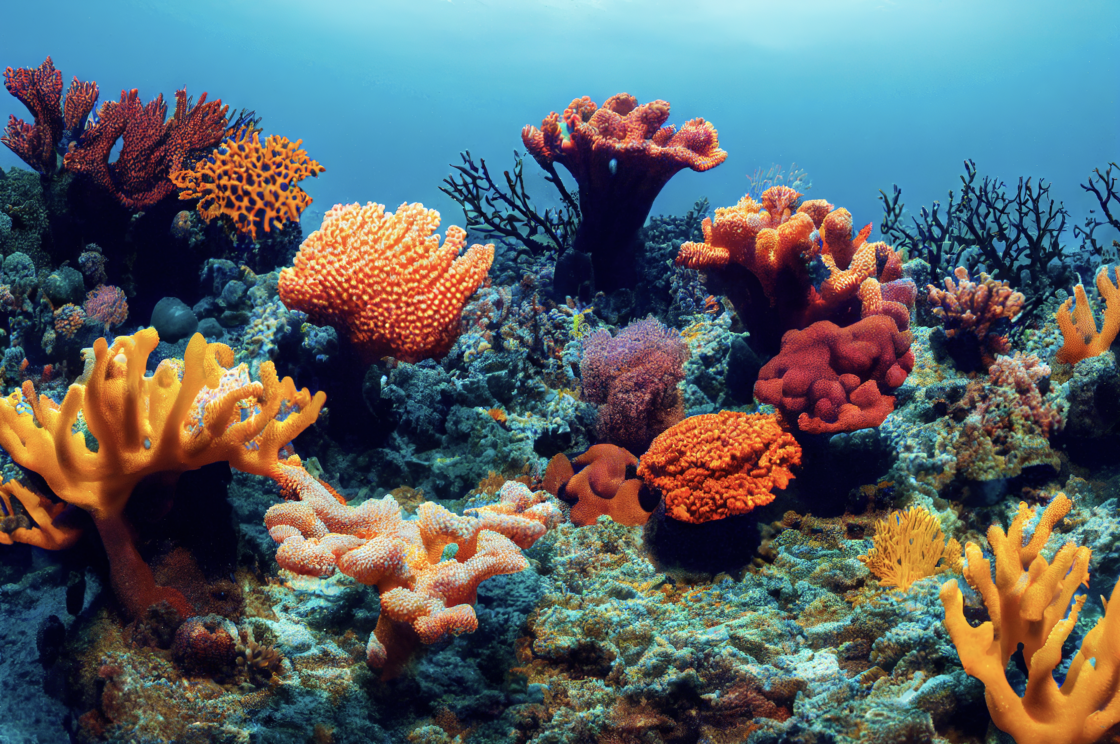Coral reefs, often referred to as the “rainforests of the sea,” are some of the most diverse and valuable ecosystems on Earth. These underwater structures are not just beautiful spectacles; they are vital for the health of our planet’s oceans and hold immense ecological, economic, and cultural value. Understanding the intricacies of coral, from its formation to its unique methods of communication and survival, is essential in appreciating and conserving these natural wonders.
Detailed Formation and Structure
Corals are marine invertebrates within the class Anthozoa of the phylum Cnidaria. They typically live in compact colonies of many identical individual polyps. Each polyp is a sac-like animal typically only a few millimeters in diameter and a few centimeters in height. They secrete calcium carbonate to form a hard skeleton, which serves as the backbone of coral reefs.
The process of reef formation is slow and complex. When coral polyps settle on hard surfaces, they multiply and create colonies. These colonies grow by asexual reproduction of the polyps, along with the continuous deposition of calcium carbonate, which forms the reef structure. As these structures grow over thousands of years, they develop into the complex and expansive reefs we see today.
Living Processes: Symbiosis and Nutrition
The symbiotic relationship between coral polyps and zooxanthellae is fundamental to the survival and prosperity of coral reefs. Zooxanthellae are photosynthetic algae that live within the coral’s tissues. Through photosynthesis, they produce oxygen and help the coral to remove wastes. Most importantly, they provide the coral with organic compounds produced during photosynthesis, which are critical for coral growth.
This relationship is delicate and can be disrupted by changes in water temperature or quality, leading to coral bleaching, where the coral expels the zooxanthellae, loses its color, and is more susceptible to disease and death.
Reproduction and Spawning: A Closer Look
Coral reproduction is a remarkable process. Many coral species are hermaphrodites (producing both eggs and sperm), while others are gonochoric (producing either eggs or sperm). During spawning, corals release massive quantities of eggs and sperm into the water, a phenomenon often described as an underwater snowstorm.
This synchronous spawning is crucial for species survival, as it maximizes the chances of successful fertilization while minimizing predation on newly released eggs and sperm. This event is typically timed with lunar cycles, water temperatures, and length of day, although the exact environmental cues and internal mechanisms are still being studied (NOAA – Coral Spawning).
Communication and Synchronization Mysteries
The term “telepathic” communication among corals is a metaphorical description of their spawning synchrony. This phenomenon, where corals of the same species release their gametes simultaneously over large distances, is one of nature’s great mysteries. While the exact mechanism is unknown, it is believed to be a combination of environmental cues like moon phases, sunset timing, and possibly even chemical signaling. This synchronization ensures maximum cross-fertilization opportunities, critical for species that are largely stationary (Phys.org – Corals).
Ecological Importance Expanded
Coral reefs are not only biodiversity hotspots but also provide critical ecosystem services. They protect coastlines from the damaging effects of wave action and tropical storms; provide habitats and shelter for many marine organisms; are a source of nitrogen and other essential nutrients for marine food chains; and assist in carbon and nitrogen-fixing. They are also valuable to humans for their recreational, aesthetic, and economic value.
Conclusion and Call for Conservation
Understanding the complex life of corals and their reefs is more than an academic pursuit. It’s a crucial step towards their conservation. As climate change, pollution, and other human activities pose significant threats to these ecosystems, it becomes imperative to deepen our knowledge and strengthen our efforts to protect these natural wonders. Coral reefs, with their intricate beauty and ecological significance, are a clear reminder of the interconnectedness of life and the importance of preserving biodiversity for the health of our planet.
In conclusion, coral reefs are a testament to the intricate and delicate balance of marine ecosystems. Their study not only fascinates us with the wonders of nature but also highlights the urgency of environmental stewardship. As we continue to uncover the secrets of coral life and communication, we are reminded of our responsibility to protect these vital ecosystems for future generations.


